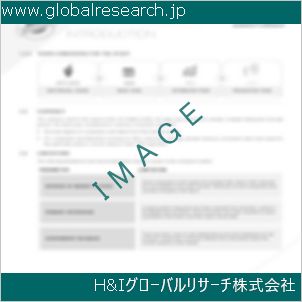Table of Contents
1 Industry Overview of Butylene oxide
1.1 Definition and Specifications of Butylene oxide
1.1.1 Definition of Butylene oxide
1.1.2 Specifications of Butylene oxide
1.2 Classification of Butylene oxide
1.3 Applications of Butylene oxide
1.3.1 Nuclear Application
1.3.2 Non-Nuclear Application
1.4 Industry Chain Structure of Butylene oxide
1.5 Industry Overview and Major Regions Status of Butylene oxide
1.5.1 Industry Overview of Butylene oxide
1.5.2 Global Major Regions Status of Butylene oxide
1.6 Industry Policy Analysis of Butylene oxide
1.7 Industry News Analysis of Butylene oxide
2 Manufacturing Cost Structure Analysis of Butylene oxide
2.1 Raw Material Suppliers and Price Analysis of Butylene oxide
2.2 Equipment Suppliers and Price Analysis of Butylene oxide
2.3 Labor Cost Analysis of Butylene oxide
2.4 Other Costs Analysis of Butylene oxide
2.5 Manufacturing Cost Structure Analysis of Butylene oxide
2.6 Manufacturing Process Analysis of Butylene oxide
3 Technical Data and Manufacturing Plants Analysis of Butylene oxide
3.1 Capacity and Commercial Production Date of Global Butylene oxide Major Manufacturers in 2023
3.2 Manufacturing Plants Distribution of Global Butylene oxide Major Manufacturers in 2023
3.3 R&D Status and Technology Source of Global Butylene oxide Major Manufacturers in 2023
3.4 Raw Materials Sources Analysis of Global Butylene oxide Major Manufacturers in 2023
4 Capacity, Production and Revenue Analysis of Butylene oxide by Regions, Types and Manufacturers
4.1 Global Capacity, Production and Revenue of Butylene oxide by Regions 2019-2024
4.2 Global and Major Regions Capacity, Production, Revenue and Growth Rate of Butylene oxide 2019-2024
4.3 Global Capacity, Production and Revenue of Butylene oxide by Types 2019-2024
4.4 Global Capacity, Production and Revenue of Butylene oxide by Manufacturers 2019-2024
5 Price, Cost, Gross and Gross Margin Analysis of Butylene oxide by Regions, Types and Manufacturers
5.1 Price, Cost, Gross and Gross Margin Analysis of Butylene oxide by Regions 2019-2024
5.2 Price, Cost, Gross and Gross Margin Analysis of Butylene oxide by Types 2019-2024
5.3 Price, Cost, Gross and Gross Margin Analysis of Butylene oxide by Manufacturers 2019-2024
6 Consumption Volume, Consumption Value and Sale Price Analysis of Butylene oxide by Regions, Types and Applications
6.1 Global Consumption Volume and Consumption Value of Butylene oxide by Regions 2019-2024
6.2 Global and Major Regions Consumption Volume, Consumption Value and Growth Rate of Butylene oxide 2019-2024
6.3 Global Consumption Volume and Consumption Value of Butylene oxide by Types 2019-2024
6.4 Global Consumption Volume and Consumption Value of Butylene oxide by Applications 2019-2024
6.5 Sale Price of Butylene oxide by Regions 2019-2024
6.6 Sale Price of Butylene oxide by Types 2019-2024
6.7 Sale Price of Butylene oxide by Applications 2019-2024
6.8 Market Share Analysis of Butylene oxide by Different Sale Price Levels
7 Supply, Import, Export and Consumption Analysis of Butylene oxide
7.1 Supply, Consumption and Gap of Butylene oxide 2019-2024
7.2 Global Capacity, Production, Price, Cost, Revenue, Supply, Import, Export and Consumption of Butylene oxide 2019-2024
7.3 USA Capacity, Production, Price, Cost, Revenue, Supply, Import, Export and Consumption of Butylene oxide 2019-2024
7.4 EU Capacity, Production, Price, Cost, Revenue, Supply, Import, Export and Consumption of Butylene oxide 2019-2024
7.5 China Capacity, Production, Price, Cost, Revenue, Supply, Import, Export and Consumption of Butylene oxide 2019-2024
7.6 Japan Capacity, Production, Price, Cost, Revenue, Supply, Import, Export and Consumption of Butylene oxide 2019-2024
8 Major Manufacturers Analysis of Butylene oxide
8.1 Manufacturer One
8.1.1 Company Profile
8.1.2 Product Picture and Specifications
8.1.2.1 Type I
8.1.2.2 Type II
8.1.2.3 Type III
8.1.3 Capacity, Production, Price, Cost, Gross and Revenue
8.1.4 Contact Information
8.2 Manufacturer Two
8.2.1 Company Profile
8.2.2 Product Picture and Specifications
8.2.2.1 Type I
8.2.2.2 Type II
8.2.2.3 Type III
8.2.3 Capacity, Production, Price, Cost, Gross and Revenue
8.2.4 Contact Information
8.3 Manufacturer Three
8.3.1 Company Profile
8.3.2 Product Picture and Specifications
8.3.2.1 Type I
8.3.2.2 Type II
8.3.2.3 Type III
8.3.3 Capacity, Production, Price, Cost, Gross and Revenue
8.3.4 Contact Information
8.4 Manufacturer Four
8.4.1 Company Profile
8.4.2 Product Picture and Specifications
8.4.2.1 Type I
8.4.2.2 Type II
8.4.2.3 Type III
8.4.3 Capacity, Production, Price, Cost, Gross and Revenue
8.4.4 Contact Information
8.5 Manufacturer Five
8.5.1 Company Profile
8.5.2 Product Picture and Specifications
8.5.2.1 Type I
8.5.2.2 Type II
8.5.2.3 Type III
8.5.3 Capacity, Production, Price, Cost, Gross and Revenue
8.5.4 Contact Information
…
9 Marketing Trader or Distributor Analysis of Butylene oxide
9.1 Marketing Channels Status of Butylene oxide
9.2 Traders or Distributors with Contact Information of Butylene oxide by Regions
9.3 Ex-work Price, Channel Price and End Buyer Price Analysis of Butylene oxide
9.4 Regional Import, Export and Trade Analysis of Butylene oxide
10 Industry Chain Analysis of Butylene oxide
10.1 Upstream Major Raw Materials Suppliers Analysis of Butylene oxide
10.1.1 Major Raw Materials Suppliers with Contact Information Analysis of Butylene oxide
10.1.2 Major Raw Materials Suppliers with Supply Volume Analysis of Butylene oxide by Regions
10.2 Upstream Major Equipment Suppliers Analysis of Butylene oxide
10.2.1 Major Equipment Suppliers with Contact Information Analysis of Butylene oxide
10.2.2 Major Equipment Suppliers with Product Pictures Analysis of Butylene oxide by Regions
10.3 Downstream Major Consumers Analysis of Butylene oxide
10.3.1 Major Consumers with Contact Information Analysis of Butylene oxide
10.3.2 Major Consumers with Consumption Volume Analysis of Butylene oxide by Regions
10.4 Supply Chain Relationship Analysis of Butylene oxide
11 Development Trend of Analysis of Butylene oxide
11.1 Capacity, Production and Revenue Forecast of Butylene oxide by Regions and Types
11.1.1 Global Capacity, Production and Revenue of Butylene oxide by Regions 2024-2029
11.1.2 Global and Major Regions Capacity, Production, Revenue and Growth Rate of Butylene oxide 2024-2029
11.1.3 Global Capacity, Production and Revenue of Butylene oxide by Types 2024-2029
11.2 Consumption Volume and Consumption Value Forecast of Butylene oxide by Regions, Types and Applications
11.2.1 Global Consumption Volume and Consumption Value of Butylene oxide by Regions 2024-2029
11.2.2 Global and Major Regions Consumption Volume, Consumption Value and Growth Rate of Butylene oxide 2024-2029
11.2.3 Global Consumption Volume and Consumption Value of Butylene oxide by Types 2024-2029
11.2.4 Global Consumption Volume and Consumption Value of Butylene oxide by Applications 2024-2029
11.3 Supply, Import, Export and Consumption Forecast of Butylene oxide
11.3.1 Supply, Consumption and Gap of Butylene oxide 2024-2029
11.3.2 Global Capacity, Production, Price, Cost, Revenue, Supply, Import, Export and Consumption of Butylene oxide 2024-2029
11.3.3 USA Capacity, Production, Price, Cost, Revenue, Supply, Import, Export and Consumption of Butylene oxide 2024-2029
11.3.4 EU Capacity, Production, Price, Cost, Revenue, Supply, Import, Export and Consumption of Butylene oxide 2024-2029
11.3.5 China Capacity, Production, Price, Cost, Revenue, Supply, Import, Export and Consumption of Butylene oxide 2024-2029
11.3.6 Japan Capacity, Production, Price, Cost, Revenue, Supply, Import, Export and Consumption of Butylene oxide 2024-2029
12 New Project Investment Feasibility Analysis of Butylene oxide
12.1 New Project SWOT Analysis of Butylene oxide
12.2 New Project Investment Feasibility Analysis of Butylene oxide
13 Conclusion of the Global Butylene oxide (CAS 106-88-7) Industry 2024 Market Research Report
| ※参考情報 ブチレンオキシド(Butylene oxide)は、化学式 C4H8O で表されるオキシエタンの一種であり、CAS番号は106-88-7です。この化合物は、ブチレンの誘導体であり、エポキシ化反応によって製造されます。ブチレンオキシドは、特に重合や反応物としての利用がされていますが、その用途は非常に多岐にわたるため、工業的にも重要な化合物に分類されています。 ブチレンオキシドの化学的特徴としては、エポキシ基を有しており、そのため反応性が高いことが挙げられます。このエポキシ基は、他の化合物との化学反応を促進する性質を持ち、特に加水分解反応や開環重合反応に寄与します。ブチレンオキシドは、強い極性基を持たず、比較的低い沸点(約100℃)を持つため、揮発性があり、取り扱いが比較的容易です。 ブチレンオキシドにはいくつかの種類があり、主に異性体としての構造に基づいています。通常、ブチレンオキシドは1,2-ブチレンオキシドとして知られる形で存在しますが、他の異性体も存在します。これらの異性体は異なる物理的特性や反応性を持つことから、用途に応じて選択されます。 ブチレンオキシドの用途は、主に工業的な分野において広がっています。特に、ポリウレタンやエポキシ樹脂の前駆体としての利用が著名であり、柔軟性や耐久性を持つ材料を製造するために使用されます。ブチレンオキシドを原料にすることで、塗料、接着剤、コーティング剤などに応用される高性能なポリマー製品を開発することが可能です。また、医薬品や農薬の中間体としても利用され、化学合成における重要な成分とされています。 さらに、ブチレンオキシドは製品の耐熱性や耐薬品性を向上させるために使用されることがあります。特に、この化合物を使用することで、製品の寿命を延ばし、パフォーマンスを向上させることが可能です。また、ブチレンオキシドは、医療用の材料としても利用されることがあります。生体適合性を持つため、医療機器やデバイスの製造においても重要です。 最近の関連技術としては、より環境に優しい製造プロセスの開発が進められています。特に、持続可能な原料からの合成や、リサイクル技術の導入が注目されています。これにより、ブチレンオキシドの生産が環境負荷を減少させ、持続可能な社会に貢献することが期待されています。このような技術革新は、ブチレンオキシドの市場の競争力を高め、廃棄物の削減にも寄与しています。 最後に、ブチレンオキシドは、化学業界だけでなく、製造業や日用品、医療分野にも幅広く利用されているため、今後もその重要性は増していくでしょう。また、テクノロジーの進化とともに、新たな用途や応用が期待され、それによって様々な産業におけるブチレンオキシドの役割はますます重要になると考えられます。 |
❖ 免責事項 ❖
http://www.globalresearch.jp/disclaimer












